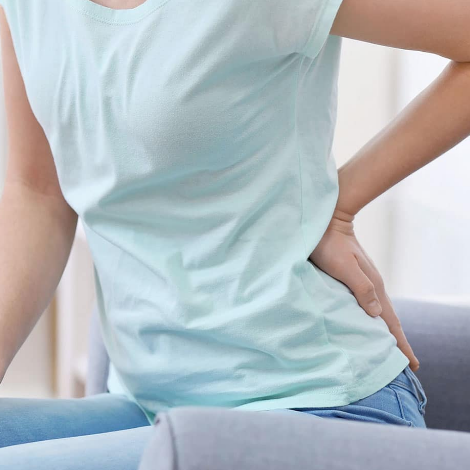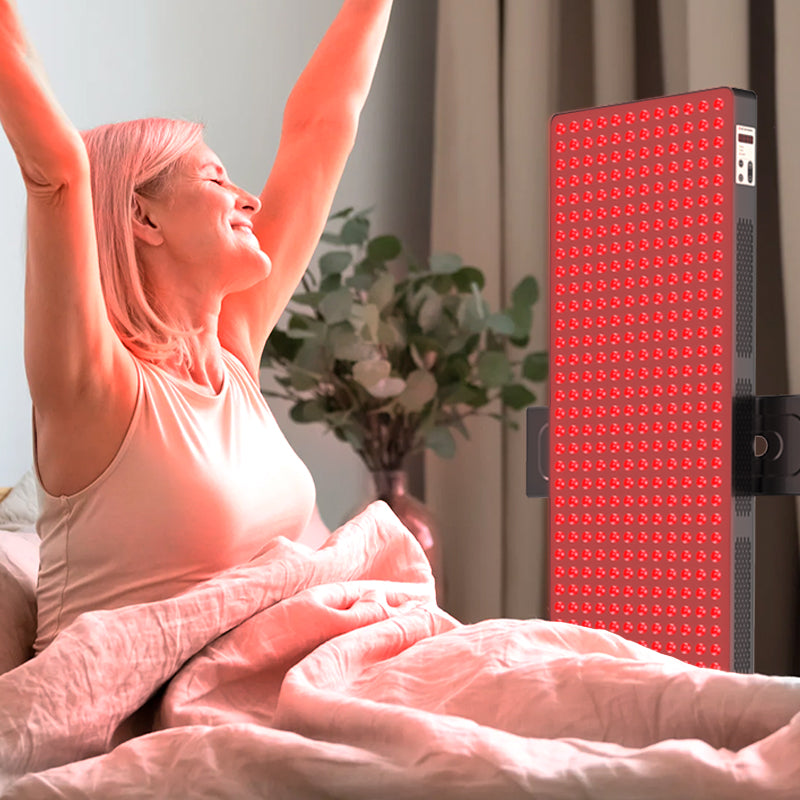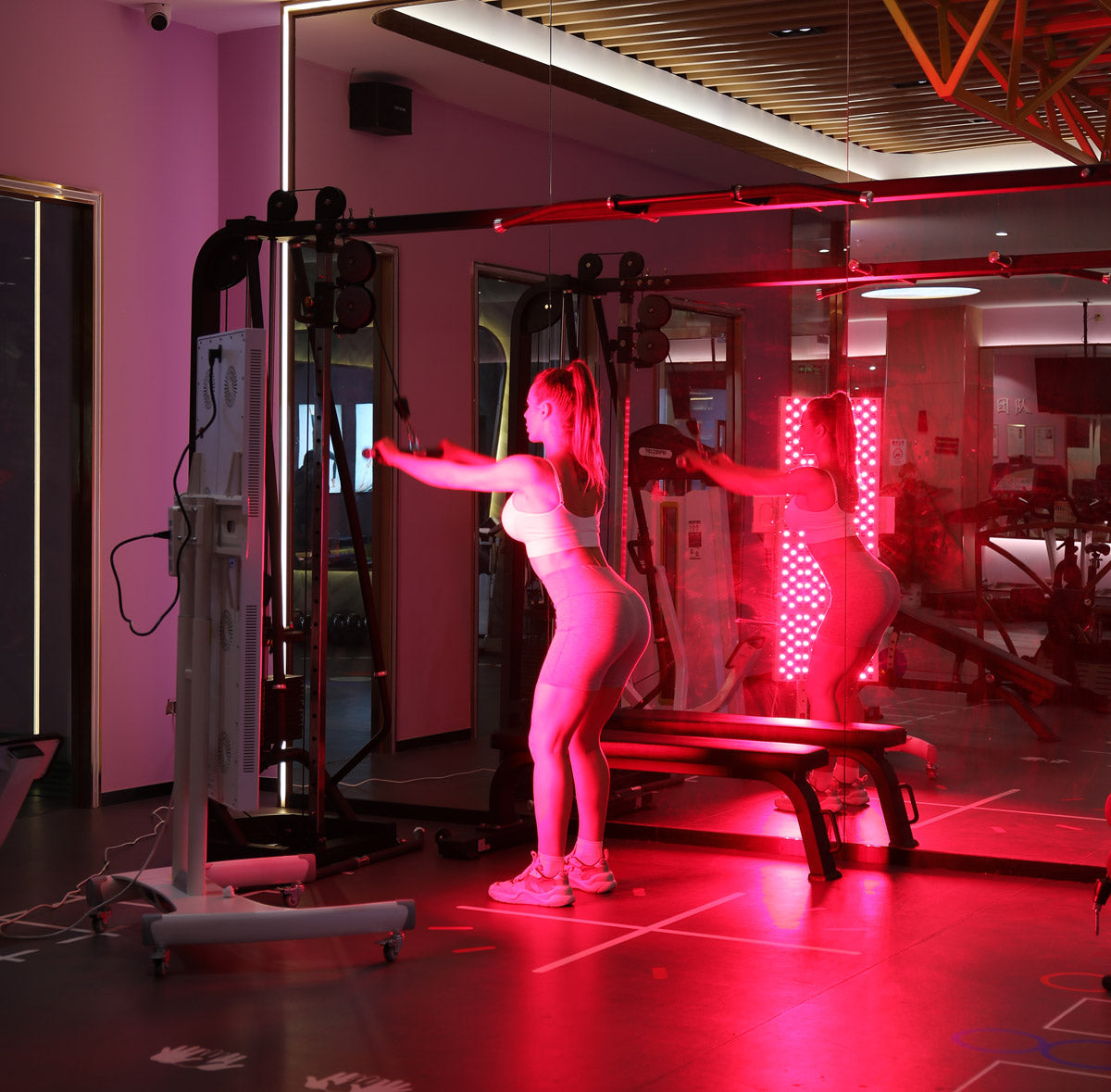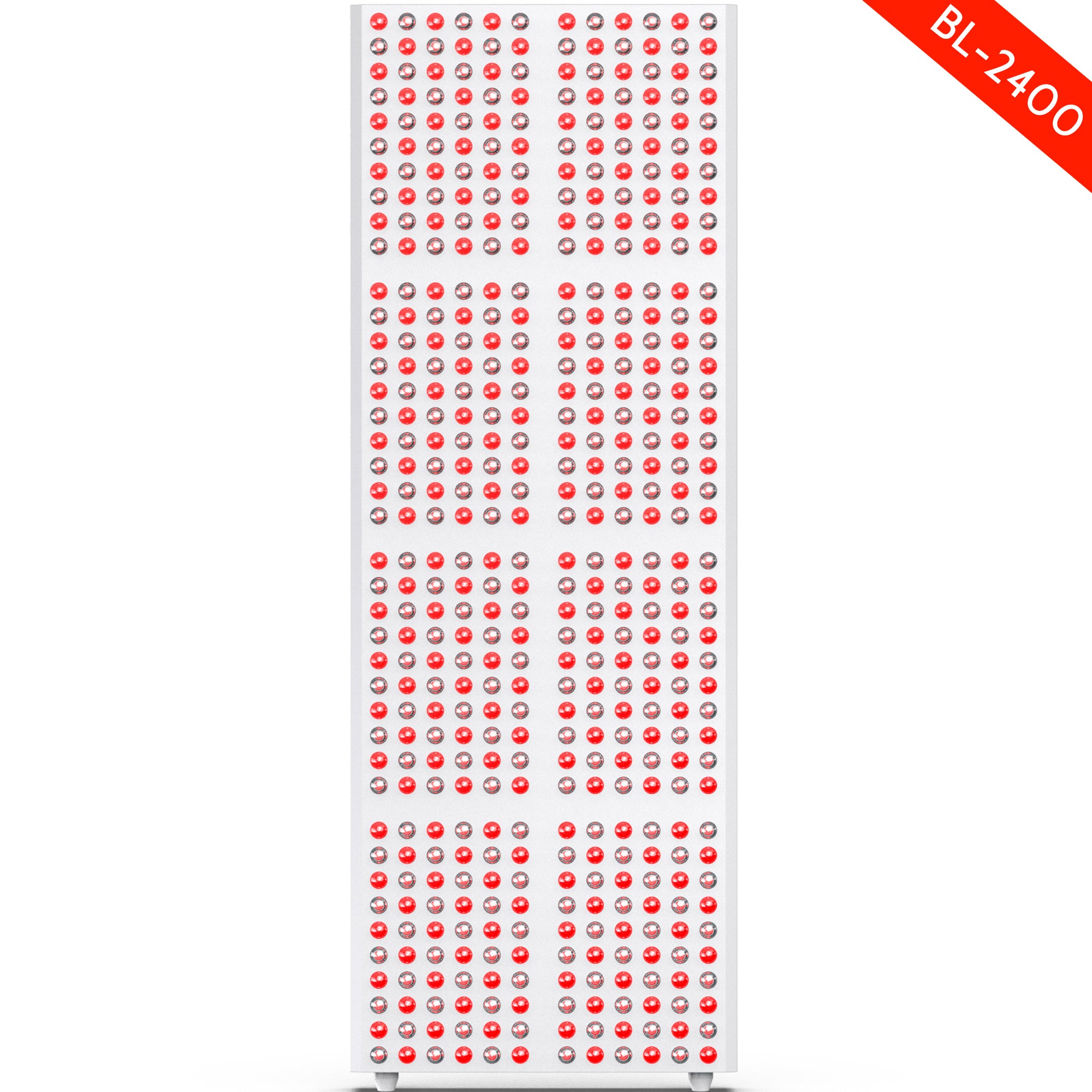Three months ago, I was curled up on my couch at 2 AM, trying every position imaginable to escape the electric pain shooting down my left leg. Sciatica had turned my life upside down—again. I'd been through this dance before: doctor visits, prescriptions that made me foggy, physical therapy sessions that helped temporarily. But this time, my neighbor mentioned something I'd never considered: red light therapy.
"It sounds like pseudoscience," I told her. She laughed and said she'd thought the same thing until her chronic back pain disappeared after two months of consistent treatment.
That conversation started my deep dive into red light therapy for sciatica. What I discovered—and experienced firsthand—surprised me.
Why Sciatica Makes Life Miserable
Let me paint you a picture of what sciatica actually feels like, because unless you've experienced it, the medical descriptions don't do it justice. Imagine someone taking a red-hot poker and slowly dragging it from your lower back, through your buttock, and down your leg. Sometimes it's a dull, persistent ache that makes you constantly shift positions. Other times, it's a sudden, breath-stealing jolt that stops you mid-step.
The sciatic nerve is basically your body's longest highway—it starts in your lower spine and travels all the way down to your toes. When something irritates or compresses this nerve, the pain can show up anywhere along that route. In my case, sitting became torture. I'd last maybe twenty minutes at my desk before the burning sensation forced me to stand and pace around my office like a caged animal.
What triggers this nightmare? Usually, it's one of these culprits:
Herniated discs are the most common cause—those gel-filled cushions between your vertebrae can bulge or rupture, pressing directly on nerve roots. Spinal stenosis happens when your spinal canal narrows with age, squeezing the nerves. Piriformis syndrome involves a small muscle deep in your buttock that can spasm and irritate the sciatic nerve (this was my problem). Spondylolisthesis sounds scary and feels worse—it's when one vertebra slides forward over another.
Here's what doctors don't always tell you: sciatica affects nearly half of us at some point. Most cases resolve within six weeks, but chronic sciatica can drag on for months or years. Traditional treatments work for many people, but they're not perfect. NSAIDs upset your stomach with long-term use. Muscle relaxants make you drowsy. Epidural injections are temporary fixes. Surgery carries risks.
That's why I started looking for alternatives.
What Exactly Is Red Light Therapy?
Red light therapy sounds like something from a sci-fi movie, but it's actually been around for decades. The technical name is photobiomodulation, which basically means using specific wavelengths of light to trigger biological processes in your cells.
Here's the simple version: devices emit red light (typically 630-700 nanometers) and near-infrared light (800-850 nanometers). These wavelengths penetrate your skin and interact with your cells' mitochondria—those tiny powerhouses that produce energy. When mitochondria absorb this light, they ramp up production of ATP (cellular energy), which kickstarts healing processes.
The deeper near-infrared wavelengths can penetrate several inches into tissue, reaching muscles, tendons, and even bones. Red wavelengths work closer to the surface but are excellent for skin and superficial inflammation.
What makes this appealing for pain management is that red light therapy appears to:
- Reduce inflammatory molecules
- Increase blood flow and oxygen delivery
- Stimulate collagen production for tissue repair
- Release endorphins (your body's natural painkillers)
- Support nerve regeneration
When I first read about these effects, I was skeptical. How could shining a light on my back possibly help with nerve pain? But the more I researched, the more the mechanism made sense.
The Science Behind Red Light and Nerve Pain
I'm not one to try treatments without some evidence backing them up, so I spent hours digging through research papers. What I found was encouraging, though I'll be honest—most studies have been done on animals or in lab settings. Human trials specifically for sciatica are limited.
A 2016 study published in Pain Research and Management caught my attention. Researchers used 670 nm red light on rats with spinal cord injuries and found significant reductions in pain hypersensitivity. The treatment appeared to modulate immune responses and reduce inflammation around the injury site.
Another study from 2010 in Photomedicine and Laser Surgery showed that 810 nm near-infrared light accelerated nerve regeneration in rats with sciatic nerve injuries. The treated rats recovered motor function faster than untreated controls.
More recently, a 2020 review in Biomedical Materials examined how red and near-infrared light affect mitochondrial function and oxidative stress—both crucial factors in nerve pain and tissue healing.
The FDA has cleared red light therapy devices for pain relief and wound healing, which adds some regulatory credibility. But I'll be upfront: we need more large-scale human studies specifically for sciatica before we can make definitive claims about effectiveness.
What convinced me to try it wasn't just the preliminary research—it was the combination of scientific plausibility, regulatory approval, and the fact that it's essentially risk-free.
My Personal Experience: Two Months of Daily Treatment
I decided to borrow my neighbor's red light device before investing in my own. It was a handheld unit with both 660 nm and 850 nm LEDs, about the size of a tablet. The first week, I treated my lower back and left buttock for 15 minutes each evening while watching TV.
Honestly, the first few sessions felt like nothing. The device was warm but not hot, and there was no immediate pain relief. I started wondering if I was wasting my time.
But by day six, something shifted. The constant burning sensation in my buttock had dulled to a mild ache. I could sit through a entire episode of a show without squirming. Small victory, but it felt huge.
Week two brought more noticeable changes. The sharp, shooting pains down my leg became less frequent. I could walk to the mailbox without that electric jolt hitting mid-stride. My sleep improved because I wasn't waking up every time I rolled over.
By month two, I'd invested in my own device—a flexible wrap that I could secure around my lower back for hands-free treatment. This was a game-changer because I could wear it while doing gentle stretches or even light household chores.
The improvement wasn't linear. Some days were better than others, and I learned that consistency mattered more than duration. Fifteen minutes daily was better than skipping days and trying to make up for it with longer sessions.
What surprised me most was how the treatment affected my overall mobility. My range of motion improved gradually, and movements that had been stiff and painful became fluid again. The numbness in my left toes—something I'd accepted as permanent—started to fade.
How to Actually Use Red Light Therapy for Sciatica
If you're considering trying this, here's what I learned about doing it effectively:
Choosing the Right Equipment
Not all red light devices are created equal. After trying several types, here's what I recommend:
Wavelengths: You want both red (630-700 nm) and near-infrared (800-850 nm). Red light handles surface inflammation, while near-infrared penetrates deeper to reach nerve roots and muscles.
Power output: Look for devices that deliver at least 35 mW/cm² of irradiance. Higher power means shorter treatment times and better tissue penetration.
Device type: Flexible wraps work well for sciatica because you can target your lower back, hips, and buttocks hands-free. Handheld devices are more versatile but require you to hold them in position. Large panels are powerful but less convenient for targeted treatment.
Safety certifications: Stick with FDA-cleared devices from established manufacturers. I've seen too many cheap knockoffs that either don't deliver the right wavelengths or lack proper safety features.
Treatment Protocol
Based on my experience and device manufacturer recommendations:
Target areas: Treat your lower back where the nerve roots exit the spine, your buttock area (especially if you have piriformis issues), and along the path of pain down your leg.
Distance: Keep the device 6-12 inches from your skin. Closer isn't necessarily better—each device has an optimal distance for maximum light penetration.
Duration: Start with 10-15 minutes per area, 5-6 days per week. You can gradually increase to 20 minutes if you're not seeing results, but more isn't always better.
Timing: I prefer evening treatments because they're relaxing, but morning sessions can be energizing. Find what works for your schedule and stick with it.
Combining with Other Approaches
Red light therapy worked best for me when combined with other treatments:
Gentle stretching: I do piriformis stretches and hip flexor stretches after each light session while my tissues are warm and relaxed.
Core strengthening: Weak core muscles contributed to my sciatica, so I added planks and bird dogs to my routine.
Posture awareness: I had to address the root cause—too much sitting with poor posture. An ergonomic chair and regular movement breaks were essential.
Heat therapy: Sometimes I use a heating pad for 5-10 minutes before red light treatment to increase blood flow and tissue receptivity.
Realistic Expectations and Limitations
Let me be clear about what red light therapy can and can't do for sciatica:
What it helped with:
- Reduced daily pain levels from 7/10 to 3/10 over two months
- Improved sleep quality (fewer pain-related wake-ups)
- Increased sitting tolerance from 20 minutes to over an hour
- Reduced muscle tension and stiffness
- Faster recovery from flare-ups
What it didn't fix:
- The underlying cause of my sciatica (tight piriformis muscle)
- Poor movement patterns that contributed to the problem
- Acute, severe pain during bad flare-ups
- The need for other treatments like stretching and strengthening
Important limitations: If your sciatica is caused by a large herniated disc or severe spinal stenosis, red light therapy alone probably won't be enough. These conditions may require more aggressive treatment or even surgery.
The treatment requires patience and consistency. This isn't a quick fix like taking a painkiller. It takes weeks to see meaningful results, and the benefits can fade if you stop treatment abruptly.
Individual responses vary significantly. Some people notice improvement within days, others need months, and a minority don't respond at all.
Comparing Red Light Therapy to Other Sciatica Treatments
To help you decide if RLT is right for you, here’s how it stacks up against common sciatica treatments:
|
Treatment |
Pros |
Cons |
|---|---|---|
|
Red Light Therapy |
Non-invasive, no side effects, promotes healing, can be done at home |
Requires consistency, upfront cost, limited human studies for sciatica |
|
Pain Medications |
Fast relief, widely available |
Risk of addiction, side effects like nausea, doesn’t address root cause |
|
Physical Therapy |
Addresses root cause, improves strength and mobility |
Time-intensive, may not provide immediate pain relief |
|
Steroid Injections |
Quick pain relief, reduces inflammation |
Temporary effects, risks like infection or nerve damage |
|
Surgery |
Effective for severe cases (e.g., large herniated discs) |
Invasive, long recovery, risks like infection or failed surgery |
For me, RLT was a game-changer because it offered relief without the risks of meds or surgery. It’s not a cure-all, but it’s a low-risk option worth trying, especially if you’re wary of pharmaceuticals.
Cost Considerations and Practical Tips
Quality red light devices aren't cheap. Handheld units start around $150, flexible wraps run $300-500, and full-body panels can cost over $1000. However, compared to ongoing medications, physical therapy copays, or potential surgery costs, it can be economical long-term.
Here are some practical tips I wish someone had told me:
- Start with a trial: See if you can borrow or rent a device before buying. Some companies offer return policies, but they're usually limited.
- Track your progress: Keep a simple log of pain levels, sleep quality, and functional improvements. It's easy to forget how much progress you've made.
- Use on bare skin: Clothing blocks light penetration. I learned this the hard way after wondering why my treatment through a shirt wasn't working.
- Stay hydrated: Proper hydration supports the cellular processes that red light therapy stimulates.
-
Be patient with flare-ups: Even with regular treatment, you may still have bad days. Don't abandon the therapy—it may help you recover faster.
My Honest Assessment After Six Months
It's been six months since I started red light therapy, and I'm still using it 3-4 times per week for maintenance. My sciatica isn't completely gone—I still have minor flare-ups if I sit too long or sleep wrong—but it's manageable in a way it wasn't before.
Would I recommend red light therapy for sciatica? Yes, with caveats. It's not a miracle cure, and it won't replace the need to address underlying causes like poor posture, muscle imbalances, or movement dysfunction. But as part of a comprehensive approach, it's been incredibly valuable for managing pain and inflammation.
The key is setting realistic expectations, being consistent with treatment, and using it alongside other proven therapies. If you're tired of relying solely on medications or looking for a non-invasive option to try before considering surgery, red light therapy is worth exploring.












Leave a comment
This site is protected by hCaptcha and the hCaptcha Privacy Policy and Terms of Service apply.